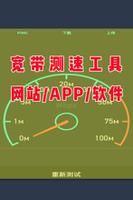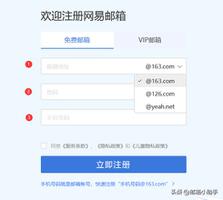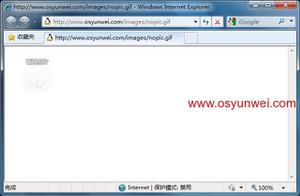DeclarativeRESTClientFeign

7.1 How to Include Feign
To include Feign in your project use the starter with group org.springframework.cloud and artifact id spring-cloud-starter-openfeign. See the Spring Cloud Project page for details on setting up your build system with the current Spring Cloud Release Train.
Example spring boot app
@SpringBootApplication@EnableFeignClients
publicclass Application {
publicstaticvoid main(String[] args) {
SpringApplication.run(Application.class, args);
}
}
StoreClient.java.
@FeignClient("stores")publicinterface StoreClient {
@RequestMapping(method = RequestMethod.GET, value = "/stores")
List<Store> getStores();
@RequestMapping(method = RequestMethod.POST, value = "/stores/{storeId}", consumes = "application/json")
Store update(@PathVariable("storeId") Long storeId, Store store);
}
In the @FeignClient annotation the String value ("stores" above) is an arbitrary client name, which is used to create a Ribbon load balancer (see below for details of Ribbon support). You can also specify a URL using the url attribute (absolute value or just a hostname). The name of the bean in the application context is the fully qualified name of the interface. To specify your own alias value you can use the qualifier value of the @FeignClient annotation.
The Ribbon client above will want to discover the physical addresses for the "stores" service. If your application is a Eureka client then it will resolve the service in the Eureka service registry. If you don’t want to use Eureka, you can simply configure a list of servers in your external configuration (see above for example).
7.2 Overriding Feign Defaults
A central concept in Spring Cloud’s Feign support is that of the named client. Each feign client is part of an ensemble of components that work together to contact a remote server on demand, and the ensemble has a name that you give it as an application developer using the @FeignClient annotation. Spring Cloud creates a new ensemble as an ApplicationContext on demand for each named client using FeignClientsConfiguration. This contains (amongst other things) an feign.Decoder, a feign.Encoder, and a feign.Contract.
Spring Cloud lets you take full control of the feign client by declaring additional configuration (on top of the FeignClientsConfiguration) using @FeignClient. Example:
@FeignClient(name = "stores", configuration = FooConfiguration.class)publicinterface StoreClient {
//..
}
In this case the client is composed from the components already in FeignClientsConfiguration together with any in FooConfiguration (where the latter will override the former).
FooConfiguration does not need to be annotated with @Configuration. However, if it is, then take care to exclude it from any @ComponentScan that would otherwise include this configuration as it will become the default source for feign.Decoder, feign.Encoder, feign.Contract, etc., when specified. This can be avoided by putting it in a separate, non-overlapping package from any @ComponentScan or @SpringBootApplication, or it can be explicitly excluded in @ComponentScan.
The serviceId attribute is now deprecated in favor of the name attribute.
Previously, using the url attribute, did not require the name attribute. Using name is now required.
Placeholders are supported in the name and url attributes.
@FeignClient(name = "${feign.name}", url = "${feign.url}")publicinterface StoreClient {
//..
}
Spring Cloud Netflix provides the following beans by default for feign (BeanType beanName: ClassName):
DecoderfeignDecoder:ResponseEntityDecoder(which wraps aSpringDecoder)EncoderfeignEncoder:SpringEncoderLoggerfeignLogger:Slf4jLoggerContractfeignContract:SpringMvcContractFeign.BuilderfeignBuilder:HystrixFeign.BuilderClientfeignClient: if Ribbon is enabled it is aLoadBalancerFeignClient, otherwise the default feign client is used.
The OkHttpClient and ApacheHttpClient feign clients can be used by setting feign.okhttp.enabled or feign.httpclient.enabled to true, respectively, and having them on the classpath. You can customize the HTTP client used by providing a bean of either ClosableHttpClient when using Apache or OkHttpClient whe using OK HTTP.
Spring Cloud Netflix does not provide the following beans by default for feign, but still looks up beans of these types from the application context to create the feign client:
Logger.LevelRetryerErrorDecoderRequest.OptionsCollection<RequestInterceptor>SetterFactory
Creating a bean of one of those type and placing it in a @FeignClient configuration (such as FooConfiguration above) allows you to override each one of the beans described. Example:
@Configurationpublicclass FooConfiguration {
@Bean
public Contract feignContract() {
returnnew feign.Contract.Default();
}
@Bean
public BasicAuthRequestInterceptor basicAuthRequestInterceptor() {
returnnew BasicAuthRequestInterceptor("user", "password");
}
}
This replaces the SpringMvcContract with feign.Contract.Default and adds a RequestInterceptor to the collection of RequestInterceptor.
@FeignClient also can be configured using configuration properties.
application.yml
feign:client:
config:
feignName:
connectTimeout: 5000
readTimeout: 5000
loggerLevel: full
errorDecoder: com.example.SimpleErrorDecoder
retryer: com.example.SimpleRetryer
requestInterceptors:
- com.example.FooRequestInterceptor
- com.example.BarRequestInterceptor
decode404: false
encoder: com.example.SimpleEncoder
decoder: com.example.SimpleDecoder
contract: com.example.SimpleContract
Default configurations can be specified in the @EnableFeignClients attribute defaultConfiguration in a similar manner as described above. The difference is that this configuration will apply to all feign clients.
If you prefer using configuration properties to configured all @FeignClient, you can create configuration properties with default feign name.
application.yml
feign:client:
config:
default:
connectTimeout: 5000
readTimeout: 5000
loggerLevel: basic
If we create both @Configuration bean and configuration properties, configuration properties will win. It will override @Configuration values. But if you want to change the priority to @Configuration, you can change feign.client.default-to-properties to false.
If you need to use ThreadLocal bound variables in your RequestInterceptor`s you will need to either set the thread isolation strategy for Hystrix to `SEMAPHORE or disable Hystrix in Feign.
application.yml
# To disable Hystrix in Feignfeign:
hystrix:
enabled: false
# To set thread isolation to SEMAPHORE
hystrix:
command:
default:
execution:
isolation:
strategy: SEMAPHORE
7.3 Creating Feign Clients Manually
In some cases it might be necessary to customize your Feign Clients in a way that is not possible using the methods above. In this case you can create Clients using the Feign Builder API. Below is an example which creates two Feign Clients with the same interface but configures each one with a separate request interceptor.
@Import(FeignClientsConfiguration.class)class FooController {
private FooClient fooClient;
private FooClient adminClient;
@Autowired
public FooController(
Decoder decoder, Encoder encoder, Client client, Contract contract) {
this.fooClient = Feign.builder().client(client)
.encoder(encoder)
.decoder(decoder)
.contract(contract)
.requestInterceptor(new BasicAuthRequestInterceptor("user", "user"))
.target(FooClient.class, "http://PROD-SVC");
this.adminClient = Feign.builder().client(client)
.encoder(encoder)
.decoder(decoder)
.contract(contract)
.requestInterceptor(new BasicAuthRequestInterceptor("admin", "admin"))
.target(FooClient.class, "http://PROD-SVC");
}
}
In the above example FeignClientsConfiguration.class is the default configuration provided by Spring Cloud Netflix.
PROD-SVC is the name of the service the Clients will be making requests to.
The Feign Contract object defines what annotations and values are valid on interfaces. The autowired Contract bean provides supports for SpringMVC annotations, instead of the default Feign native annotations.
7.4 Feign Hystrix Support
If Hystrix is on the classpath and feign.hystrix.enabled=true, Feign will wrap all methods with a circuit breaker. Returning a com.netflix.hystrix.HystrixCommand is also available. This lets you use reactive patterns (with a call to .toObservable() or .observe() or asynchronous use (with a call to .queue()).
To disable Hystrix support on a per-client basis create a vanilla Feign.Builder with the "prototype" scope, e.g.:
@Configurationpublicclass FooConfiguration {
@Bean
@Scope("prototype")
public Feign.Builder feignBuilder() {
return Feign.builder();
}
}
Prior to the Spring Cloud Dalston release, if Hystrix was on the classpath Feign would have wrapped all methods in a circuit breaker by default. This default behavior was changed in Spring Cloud Dalston in favor for an opt-in approach.
7.5 Feign Hystrix Fallbacks
Hystrix supports the notion of a fallback: a default code path that is executed when they circuit is open or there is an error. To enable fallbacks for a given @FeignClient set the fallback attribute to the class name that implements the fallback. You also need to declare your implementation as a Spring bean.
@FeignClient(name = "hello", fallback = HystrixClientFallback.class)protectedinterface HystrixClient {
@RequestMapping(method = RequestMethod.GET, value = "/hello")
Hello iFailSometimes();
}
staticclass HystrixClientFallback implements HystrixClient {
@Override
public Hello iFailSometimes() {
returnnew Hello("fallback");
}
}
If one needs access to the cause that made the fallback trigger, one can use the fallbackFactory attribute inside @FeignClient.
@FeignClient(name = "hello", fallbackFactory = HystrixClientFallbackFactory.class)protectedinterface HystrixClient {
@RequestMapping(method = RequestMethod.GET, value = "/hello")
Hello iFailSometimes();
}
@Component
staticclass HystrixClientFallbackFactory implements FallbackFactory<HystrixClient> {
@Override
public HystrixClient create(Throwable cause) {
returnnew HystrixClient() {
@Override
public Hello iFailSometimes() {
returnnew Hello("fallback; reason was: " + cause.getMessage());
}
};
}
}
There is a limitation with the implementation of fallbacks in Feign and how Hystrix fallbacks work. Fallbacks are currently not supported for methods that return com.netflix.hystrix.HystrixCommand and rx.Observable.
7.6 Feign and @Primary
When using Feign with Hystrix fallbacks, there are multiple beans in the ApplicationContext of the same type. This will cause @Autowired to not work because there isn’t exactly one bean, or one marked as primary. To work around this, Spring Cloud Netflix marks all Feign instances as @Primary, so Spring Framework will know which bean to inject. In some cases, this may not be desirable. To turn off this behavior set the primary attribute of @FeignClient to false.
@FeignClient(name = "hello", primary = false)publicinterface HelloClient {
// methods here
}
7.7 Feign Inheritance Support
Feign supports boilerplate apis via single-inheritance interfaces. This allows grouping common operations into convenient base interfaces.
UserService.java.
publicinterface UserService {@RequestMapping(method = RequestMethod.GET, value ="/users/{id}")
User getUser(@PathVariable("id")long id);
}
UserResource.java.
@RestControllerpublicclass UserResource implements UserService {
}
UserClient.java.
package project.user;@FeignClient("users")
publicinterface UserClient extends UserService {
}
It is generally not advisable to share an interface between a server and a client. It introduces tight coupling, and also actually doesn’t work with Spring MVC in its current form (method parameter mapping is not inherited).
7.8 Feign request/response compression
You may consider enabling the request or response GZIP compression for your Feign requests. You can do this by enabling one of the properties:
feign.compression.request.enabled=truefeign.compression.response.enabled=true
Feign request compression gives you settings similar to what you may set for your web server:
feign.compression.request.enabled=truefeign.compression.request.mime-types=text/xml,application/xml,application/json
feign.compression.request.min-request-size=2048
These properties allow you to be selective about the compressed media types and minimum request threshold length.
7.9 Feign logging
A logger is created for each Feign client created. By default the name of the logger is the full class name of the interface used to create the Feign client. Feign logging only responds to the DEBUG level.
application.yml.
logging.level.project.user.UserClient: DEBUG
The Logger.Level object that you may configure per client, tells Feign how much to log. Choices are:
NONE, No logging (DEFAULT).BASIC, Log only the request method and URL and the response status code and execution time.HEADERS, Log the basic information along with request and response headers.FULL, Log the headers, body, and metadata for both requests and responses.
For example, the following would set the Logger.Level to FULL:
@Configurationpublicclass FooConfiguration {
@Bean
Logger.Level feignLoggerLevel() {
return Logger.Level.FULL;
}
}
以上是 DeclarativeRESTClientFeign 的全部内容, 来源链接: utcz.com/z/513096.html







